Birthmarks
Birthmarks are due to excessive growth of cells that produce veins (called vascular), or pigment (called pigmented).
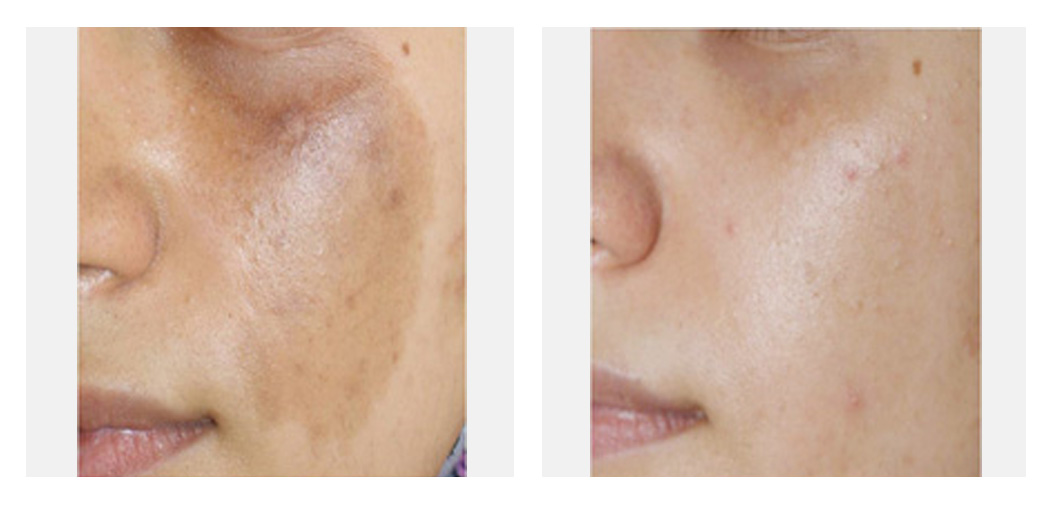 |
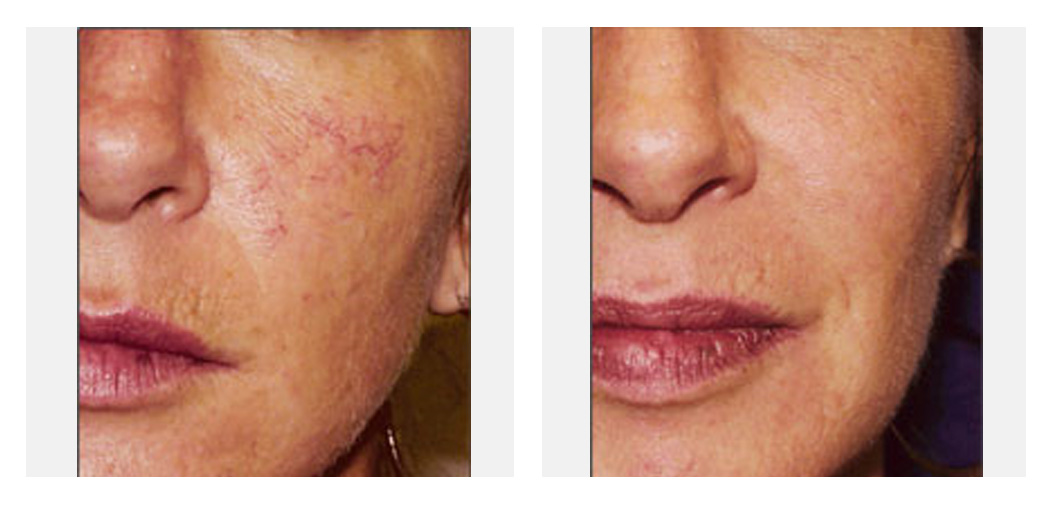 |
| Laser removal of birthmark in 2 sessions | Before and after treatment of facial telangiectasias |
What birthmarks are treated with pigmented laser?
Brown patches of the skin present at birth or developing in early adulthood, such as nevus pigmentosus or nevus of Ota are removed almost completely with a few laser sessions. Other brown birthmarks such large nevi, cafe au lait and becker's nevus are harder to treat. Any hair overlying pigmented birthmarks is easily removed with laser which makes a very nice difference.
The vascular laser can treat vascular lesions such as telangiectasias (dilated capillaries, often due to rosacea), port wine stain birthmarks, and strawberry hemangiomas. Leg veins up to 2mm in width can be eliminated. What all these conditions have in common is that they are made up of abnormal blood vessels in the skin. For example, telangiectasias, or broken blood vessels, usually involve single vessels and are often harmless. Port wine stains, on the other hand, tend to grow with the patient, usually infants, darken in color with time and will never go away if left untreated. Hemangiomas grow very rapidly after birth but often go away with time. Hemangiomas are often a source of major cosmetic and psychological distress. Some may impair vision or breathing and should be treated before they are allowed to advance and cause bleeding, local complications, or long term scaring.
In addition, warts, red and raised scars and inflammatory lesions such as acne and psoriasis can be treated by targeting their rich vascular supply. In scars the laser turns off the blood supply, so the extra scar tissue shrinks. In acne, red spots last a long time after lesions have resolved, and are best treated with vascular lasers to normalize the complexion. In psoriasis, turning down the blood supply decreases the inflammation of psoriasis.
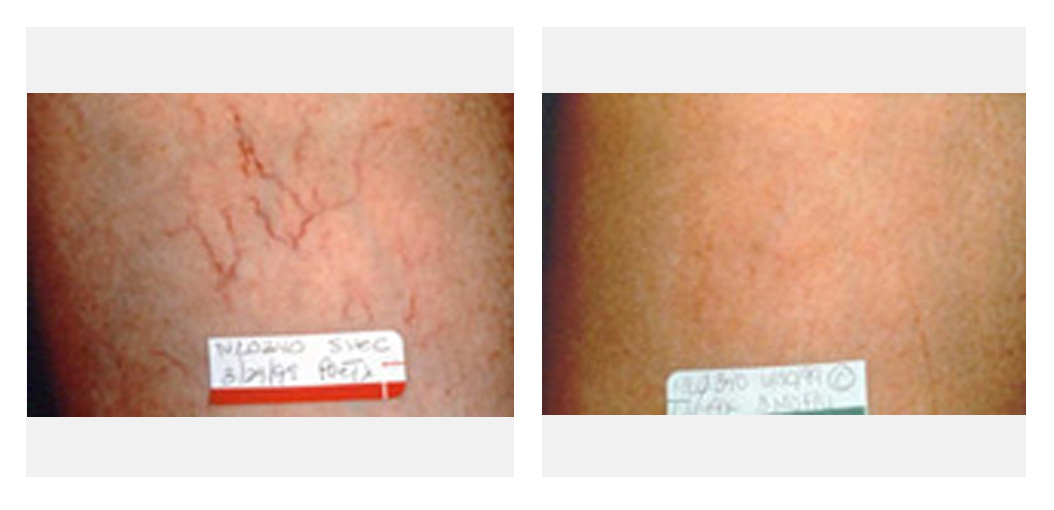 |
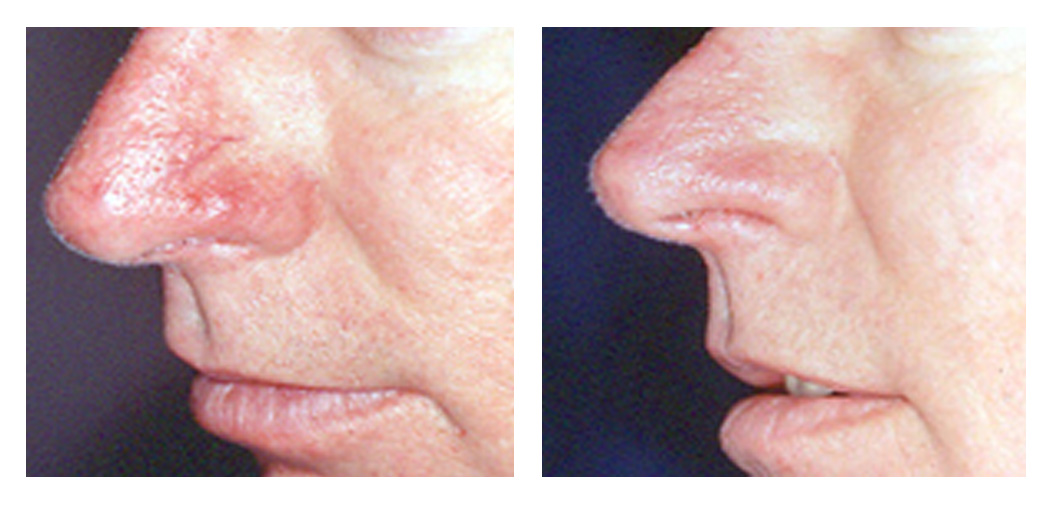 |
| Leg veins after treatment with vascular laser | Nasal Telangiectasias aftre treatment with vascular laser |
Are there any side effects?
Unlike other methods of treatment, the laser greatly reduces the potential for scarring or changes in the skin texture. Most of the time, the skin is a little red and swollen for up to 24h after the laser. Occasionally, one may experience some temporary discoloration of the skin around the treatment site Also, depending on your skin type, and the site and size of lesion treated, some patients may experience a temporary brown discoloration of the skin for a few weeks following treatment. It is always transient, however. These side effects can be often minimized with proper preoperative and postoperative care, and avoidance of aspirin and Vitamin E for 10 days prior to treatment. It is also important to avoid sunexposure while getting treated with the laser to avoid pigment changes.
How safe is treatment with a laser?
The laser is safe and effective because of its unique ability to selectively treat the blood vessels of a vascular lesion without adversely affecting the surrounding tissue. Thus, it will eliminate many lesions while leaving the surrounding skin intact. In fact, the laser is so safe that it is recommended for the treatment of infants as young as a few weeks old. Dr. Touma has experience in treating thousands of patients with vascular problems.
Is the treatment with the laser painful?
Our laser is equipped with an attached cooling device that minimizes pain. Most patients tolerate treatments without the need for anesthesia, although treatments of larger lesions may be less comfortable.
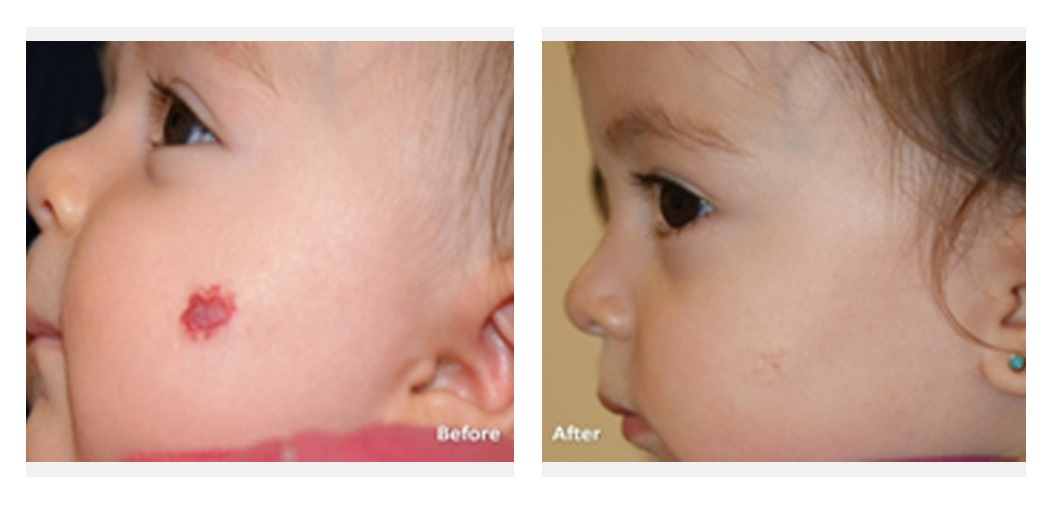 |
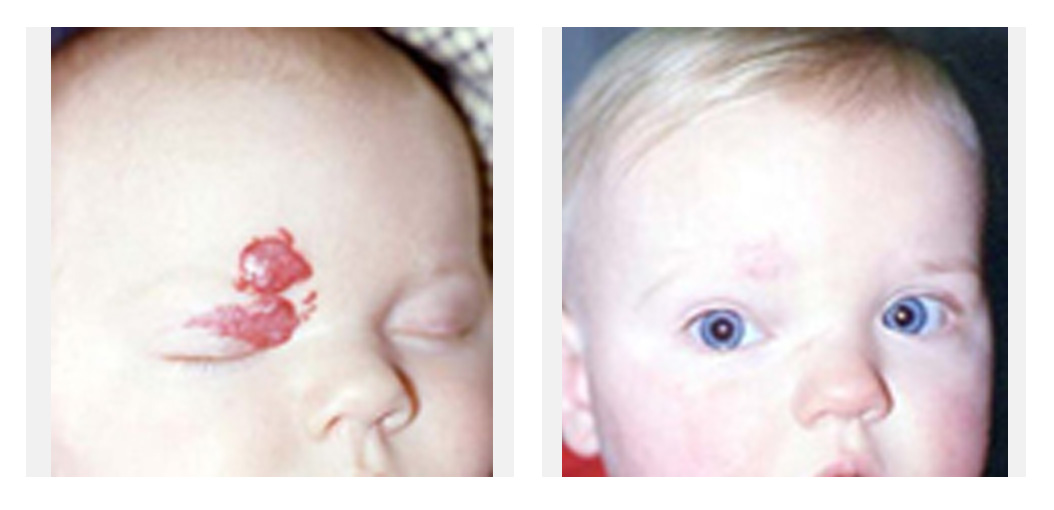 |
| Before and after Laser treatment | Before and after treatment of vascular birthmarks |
How many treatments will be needed?
Treatment with the laser varies from patient to patient depending on the type of lesion, and the size of the affected area. Some lesions, like small broken vessels, will require only a few pulses, while others, like port wine stains, will require many more, in several sessions. Leg veins will sometimes require more than one treatment.
Should certain precautions be taken after the treatment?
Immediately following treatment, we find the application of an ice pack to be soothing to the treated are. Some patients may require the application of a topical antibiotic cream or ointment. In addition, care should be taken in the first few days following treatment to avoid trauma to the fragile treatment areas.
Optimal results will be achieved with the laser if you are not suntanned. It is also recommended that you avoid exposing the treated area to the sun or cover the area with sun block that has been approved by your physician. Because pigment is often closer to the surface of the skin than the blood vessels of a lesion, a lot of pigment, such as in tanned or deeply pigmented skin, may act as a barrier to prevent the laser light from reaching the lesion.


